Alexander L. Gaunt
Generative Hierarchical Materials Search
Sep 10, 2024



Abstract:Generative models trained at scale can now produce text, video, and more recently, scientific data such as crystal structures. In applications of generative approaches to materials science, and in particular to crystal structures, the guidance from the domain expert in the form of high-level instructions can be essential for an automated system to output candidate crystals that are viable for downstream research. In this work, we formulate end-to-end language-to-structure generation as a multi-objective optimization problem, and propose Generative Hierarchical Materials Search (GenMS) for controllable generation of crystal structures. GenMS consists of (1) a language model that takes high-level natural language as input and generates intermediate textual information about a crystal (e.g., chemical formulae), and (2) a diffusion model that takes intermediate information as input and generates low-level continuous value crystal structures. GenMS additionally uses a graph neural network to predict properties (e.g., formation energy) from the generated crystal structures. During inference, GenMS leverages all three components to conduct a forward tree search over the space of possible structures. Experiments show that GenMS outperforms other alternatives of directly using language models to generate structures both in satisfying user request and in generating low-energy structures. We confirm that GenMS is able to generate common crystal structures such as double perovskites, or spinels, solely from natural language input, and hence can form the foundation for more complex structure generation in near future.
Learned Force Fields Are Ready For Ground State Catalyst Discovery
Sep 26, 2022

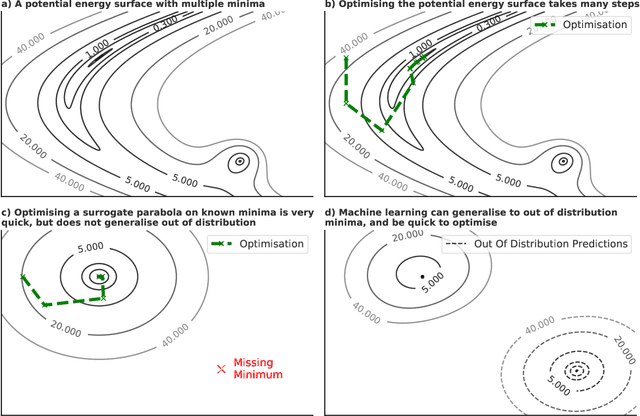
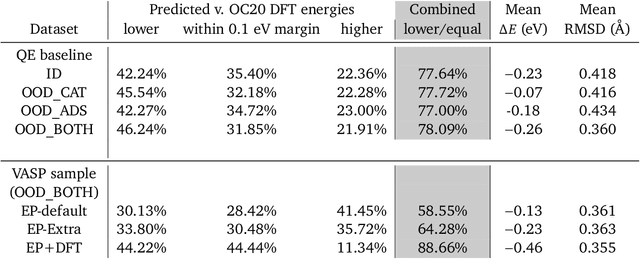
Abstract:We present evidence that learned density functional theory (``DFT'') force fields are ready for ground state catalyst discovery. Our key finding is that relaxation using forces from a learned potential yields structures with similar or lower energy to those relaxed using the RPBE functional in over 50\% of evaluated systems, despite the fact that the predicted forces differ significantly from the ground truth. This has the surprising implication that learned potentials may be ready for replacing DFT in challenging catalytic systems such as those found in the Open Catalyst 2020 dataset. Furthermore, we show that a force field trained on a locally harmonic energy surface with the same minima as a target DFT energy is also able to find lower or similar energy structures in over 50\% of cases. This ``Easy Potential'' converges in fewer steps than a standard model trained on true energies and forces, which further accelerates calculations. Its success illustrates a key point: learned potentials can locate energy minima even when the model has high force errors. The main requirement for structure optimisation is simply that the learned potential has the correct minima. Since learned potentials are fast and scale linearly with system size, our results open the possibility of quickly finding ground states for large systems.
Learning to Represent Edits
Oct 31, 2018



Abstract:We introduce the problem of learning distributed representations of edits. By combining a "neural editor" with an "edit encoder", our models learn to represent the salient information of an edit and can be used to apply edits to new inputs. We experiment on natural language and source code edit data. Our evaluation yields promising results that suggest that our neural network models learn to capture the structure and semantics of edits. We hope that this interesting task and data source will inspire other researchers to work further on this problem.
Fixing Variational Bayes: Deterministic Variational Inference for Bayesian Neural Networks
Oct 09, 2018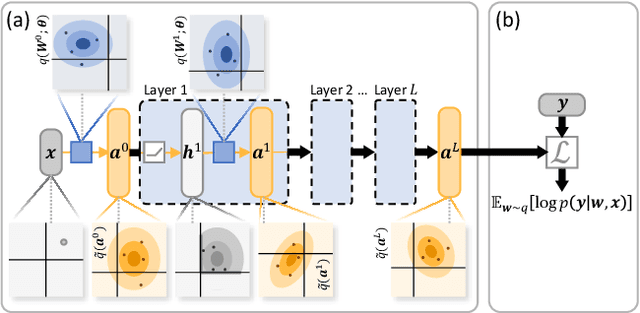

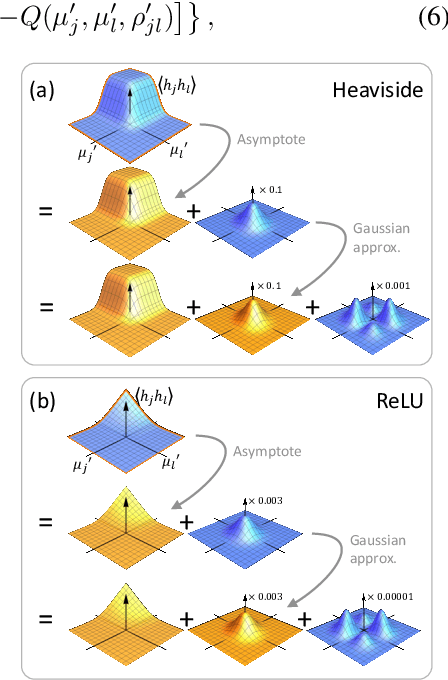

Abstract:Bayesian neural networks (BNNs) hold great promise as a flexible and principled solution to deal with uncertainty when learning from finite data. Among approaches to realize probabilistic inference in deep neural networks, variational Bayes (VB) is theoretically grounded, generally applicable, and computationally efficient. With wide recognition of potential advantages, why is it that variational Bayes has seen very limited practical use for BNNs in real applications? We argue that variational inference in neural networks is fragile: successful implementations require careful initialization and tuning of prior variances, as well as controlling the variance of Monte Carlo gradient estimates. We fix VB and turn it into a robust inference tool for Bayesian neural networks. We achieve this with two innovations: first, we introduce a novel deterministic method to approximate moments in neural networks, eliminating gradient variance; second, we introduce a hierarchical prior for parameters and a novel empirical Bayes procedure for automatically selecting prior variances. Combining these two innovations, the resulting method is highly efficient and robust. On the application of heteroscedastic regression we demonstrate strong predictive performance over alternative approaches.
Constrained Graph Variational Autoencoders for Molecule Design
May 23, 2018



Abstract:Graphs are ubiquitous data structures for representing interactions between entities. With an emphasis on the use of graphs to represent chemical molecules, we explore the task of learning to generate graphs that conform to a distribution observed in training data. We propose a variational autoencoder model in which both encoder and decoder are graph-structured. Our decoder assumes a sequential ordering of graph extension steps and we discuss and analyze design choices that mitigate the potential downsides of this linearization. Experiments compare our approach with a wide range of baselines on the molecule generation task and show that our method is more successful at matching the statistics of the original dataset on semantically important metrics. Furthermore, we show that by using appropriate shaping of the latent space, our model allows us to design molecules that are (locally) optimal in desired properties.
Generative Code Modeling with Graphs
May 22, 2018



Abstract:Generative models for source code are an interesting structured prediction problem, requiring to reason about both hard syntactic and semantic constraints as well as about natural, likely programs. We present a novel model for this problem that uses a graph to represent the intermediate state of the generated output. The generative procedure interleaves grammar-driven expansion steps with graph augmentation and neural message passing steps. An experimental evaluation shows that our new model can generate semantically meaningful expressions, outperforming a range of strong baselines.
Graph Partition Neural Networks for Semi-Supervised Classification
Mar 16, 2018



Abstract:We present graph partition neural networks (GPNN), an extension of graph neural networks (GNNs) able to handle extremely large graphs. GPNNs alternate between locally propagating information between nodes in small subgraphs and globally propagating information between the subgraphs. To efficiently partition graphs, we experiment with several partitioning algorithms and also propose a novel variant for fast processing of large scale graphs. We extensively test our model on a variety of semi-supervised node classification tasks. Experimental results indicate that GPNNs are either superior or comparable to state-of-the-art methods on a wide variety of datasets for graph-based semi-supervised classification. We also show that GPNNs can achieve similar performance as standard GNNs with fewer propagation steps.
AMPNet: Asynchronous Model-Parallel Training for Dynamic Neural Networks
Jun 22, 2017



Abstract:New types of machine learning hardware in development and entering the market hold the promise of revolutionizing deep learning in a manner as profound as GPUs. However, existing software frameworks and training algorithms for deep learning have yet to evolve to fully leverage the capability of the new wave of silicon. We already see the limitations of existing algorithms for models that exploit structured input via complex and instance-dependent control flow, which prohibits minibatching. We present an asynchronous model-parallel (AMP) training algorithm that is specifically motivated by training on networks of interconnected devices. Through an implementation on multi-core CPUs, we show that AMP training converges to the same accuracy as conventional synchronous training algorithms in a similar number of epochs, but utilizes the available hardware more efficiently even for small minibatch sizes, resulting in significantly shorter overall training times. Our framework opens the door for scaling up a new class of deep learning models that cannot be efficiently trained today.
DeepCoder: Learning to Write Programs
Mar 08, 2017



Abstract:We develop a first line of attack for solving programming competition-style problems from input-output examples using deep learning. The approach is to train a neural network to predict properties of the program that generated the outputs from the inputs. We use the neural network's predictions to augment search techniques from the programming languages community, including enumerative search and an SMT-based solver. Empirically, we show that our approach leads to an order of magnitude speedup over the strong non-augmented baselines and a Recurrent Neural Network approach, and that we are able to solve problems of difficulty comparable to the simplest problems on programming competition websites.
Differentiable Programs with Neural Libraries
Mar 02, 2017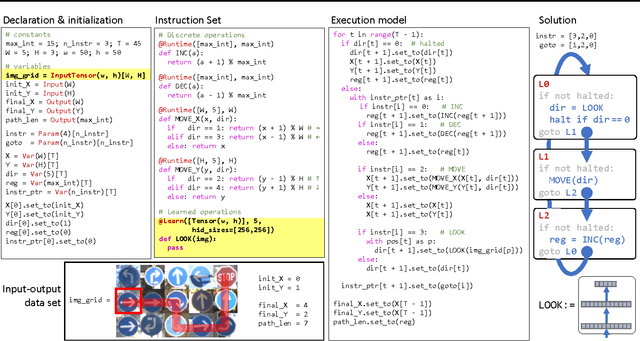

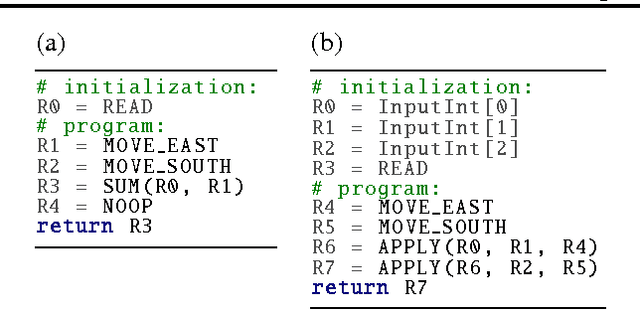
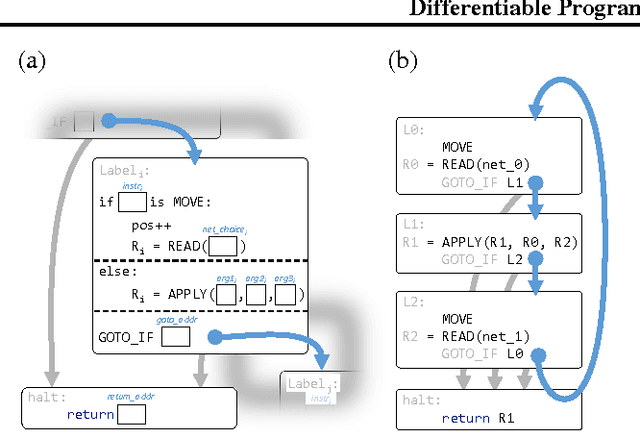
Abstract:We develop a framework for combining differentiable programming languages with neural networks. Using this framework we create end-to-end trainable systems that learn to write interpretable algorithms with perceptual components. We explore the benefits of inductive biases for strong generalization and modularity that come from the program-like structure of our models. In particular, modularity allows us to learn a library of (neural) functions which grows and improves as more tasks are solved. Empirically, we show that this leads to lifelong learning systems that transfer knowledge to new tasks more effectively than baselines.
 Add to Chrome
Add to Chrome Add to Firefox
Add to Firefox Add to Edge
Add to Edge